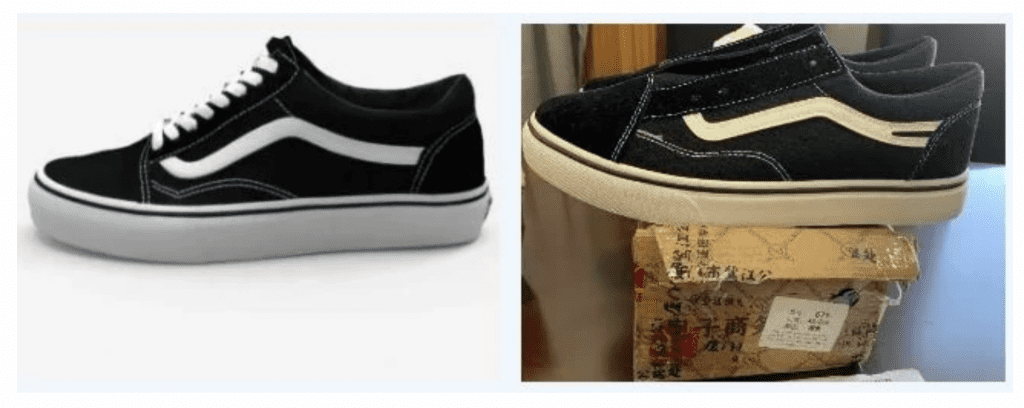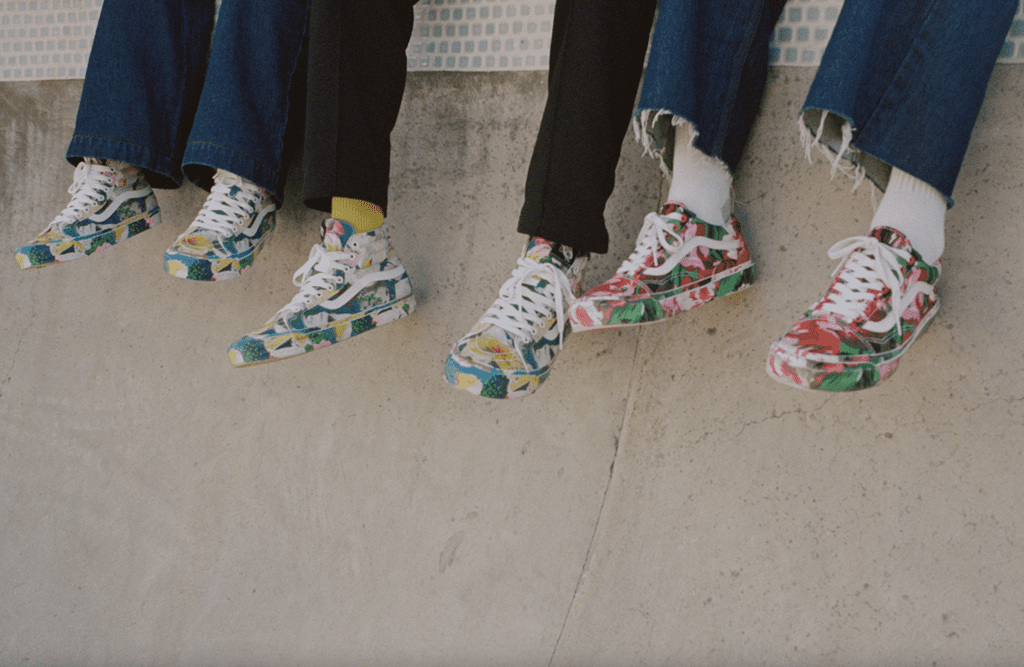Vans has landed a win in the latest round of a trademark battle over infringing footwear in China. In a newly-issued decision, the Wenzhou Intermediate People’s Court upheld the judgment of a lower court, holding that the defendants, including a footwear manufacturer headquartered in Rui’an, are on the hook for copying Vans’ OLD SKOOL sneakers and selling them in “large quantities” despite being busted and fined for selling the infringing footwear on two occasions between 2019 and 2021. Siding with Vans, the appeals court confirmed that consumers are likely to confuse the defendants’ lookalike offerings with those of Vans, and ordered that the defendants permanently refrain from making, marketing, and selling footwear that infringes Vans’ trademarks and pay a sum of 2.7 million RMB ($392,297), which includes punitive damages.
The case got its start back in June 2021 when Vans lodged a trademark infringement and counterfeiting claims against the main defendant, who was responsible for making/selling the infringing footwear, and three major e-commerce retailers in China, who similarly offered up the lookalike footwear, arguing that they had sold more than 160,000 pairs of sneakers that mimicked the design of its well-known OLD SKOOL sneakers (including Vans’ trademark-protected jazz stripe) between 2018 and 2021, generating 553,581 yuan ($80,558) in the process. With the foregoing in mind, VF Corporation-owned Vans sought injunctive relief and monetary damages.
The defendants pushed back against Vans’ case, according to Schwegman Lundberg & Woessner’s Aaron Wininger, arguing that, among other things, consumers are not likely to be confused by the allegedly infringing footwear due to a notable variation in the design of the stripe adorning the side of the sneakers and the price points at issue. Specifically, the defendants claimed that the stripe that appears on their sneakers is split at one end, making it “unique” and capable of distinguishing its offerings from those bearing Vans’ solid “jazz stripe” mark. Beyond that, the defendants argued that the price of their sneakers – 20 yuan (almost $3) – is significantly lower than Vans, who’s OLD SKOOL sneakers retail for “more than a few hundred yuan” ($70).

The difference in price means that the two companies are targeting consumers in different segments of the market, the defendants asserted, and so, “the relevant public will not misunderstand the source of the [parties’] goods.”
Unpersuaded, the Rui’an City People’s Court determined – and the Wenzhou Intermediate People’s Court affirmed – that consumers are likely to be confused as to the source/nature of the defendants’ sneakers. For one thing, the courts held that the products at play “belong to the same [category] of commodity.” At the same time, the courts determined that despite the defendants’ arguments to the contrary, the sneakers and trademarks at issue are confusingly similar, as they are “basically the same in overall composition, line shape, etc.; only the ends of the lines are split, and the overall composition is similar.” Still yet, the Wenzhou court confirmed that the defendants were making use of their stripe “as a logo” in a “clear and conspicuous” manner, and that the stripe “obviously plays a role in identifying the source of the product” in the minds of consumers, and thus, the defendants were, in fact, using the design was a trademark. (As opposed to using it in a purely decorative manner, for instance.)
As a result, the court held that the allegedly infringing footwear made use of “the same or similar trademarks on the same [types of] goods” and are “likely to cause confusion among the relevant public,” thereby, infringing Vans’ rights in the marks.
The court also pointed to the “long-term publicity” and “consistent use” of the OLD SKOOL design, including the jazz stripe mark, by Vans in China, which has resulted in a “high” level of popularity and consumer awareness of the brand and its sneakers. (No small share of VF Corp.’s annual revenue comes from the Chinese market, where Vans’ has been building in retail footprint since 2008, boasting 400 points of sale including retail, wholesale, and multi-brand in first- to third-tier cities as of 2014, according to Jing. Vans China Brand Marketing Manager Brian Smith said at the time that the company and its offerings were “well established in first- and second-tier cities,” with such brand awareness likely growing to third-tier cities since then.)
In ordering the main defendant to pay a sum of 2.43 RMB ($353,361) in damages and the retailer defendants to collectively pay a total of 267,561 yuan ($38,936), the Rui’an Court cited Paragraph 1 of Article 63 of China’s Trademark Law, which enables courts to award punitive damages in the event that the infringement is malicious. The court found that was relevant here given that the defendants continued to sell the infringing footwear after being put on notice of the infringing nature of the shoes and penalized for such sales two different times by the Rui’an Municipal Bureau of Supervision in 2019 and 2021.
(In furtherance of an overarching attempt to crack down on bad faith trademark registrations, China’s Trademark Law was amended in 2019. In addition to the inclusion of new provisions that aim to prevent the registration of marks when the filing-parties lack intent to use such marks, the amended law boosted the maximum allowable level of punitive damages that can be awarded in infringement cases. Amended Article 63, in particular, states that “for malicious infringement of the trademark exclusive right, if the circumstances are serious, the amount of compensation may be determined at more than one time but not more than five times the amount determined in accordance with the above method. The amount of compensation shall include reasonable expenses paid by the right holder to stop the infringement.”)
Upholding the damages award that the Rui’an court awarded to Vans, the Wenzhou Intermediate People’s Court stated that the lower court did not err in ordering “the malicious manufacturers pay a heavy price,” and the award sends a message that courts will “deter potential infringers, vigorously regulate the market competition order, guide the society in respecting property rights, and protect innovation and creation.”
The win for Vans comes closely on the heels of another headline-making development in a footwear case, in which the Supreme People’s Court of China invalidated the trademark registration that a Chinese individual secured for “Manolo & Blahnik” for use on footwear in China in 2000. In a decision in June, the Chinese high court found that the registrant, who was not affiliated with famous footwear brand Manolo Blahnik, had filed the application in bad faith, benefitting from the fact that China issues trademark registrations on a first-to-file (as opposed to a first-to-use) basis, and thereby, standing to significantly limit the operations of the Manolo Blahnik brand in the Chinese market, despite years of existing operations in other markets and major marketing placement.
THE BOTTOM LINE: The win for Vans, along with wins for brands like Manolo Blahnik (which is expected to pave the way for the 50-year-old brand to engage in a major expansion effort on the Chinese mainland, as well as in Taipei and Hong Kong), New Balance, Michael Jordan, and Burberry, among others, seem to suggest that while bad-faith filings continue to be a critical challenge for non-native rights holders, Chinese courts are increasingly recognizing the legitimacy of Western companies’ intellectual property rights, which “will help ensure that brands are safeguarded, and consumers’ interests are protected.”











